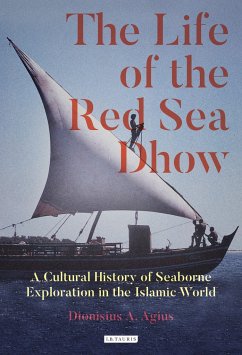Few images are as evocative as the silhouette of the Arab dhow as, under full sail, it tacks to windward on glittering waters of Red Sea before moving across the face of the rising or setting sun. In this authoritative new book, Dionisius A. Agius, one of the foremost scholars of Islamic material culture, offers a lucid and wide-ranging history of the iconic dhow from medieval to modern times. Traversing the Arabian and African coasts, he shows that the dhow was central not just to commerce but to the vital transmission and exchange of ideas. Discussing trade and salt routes, shoals and wind patterns, spice harvest seasons and the deep and resonant connection between language, memory and oral tradition, this is the first book to place the dhow in its full and remarkable cultural contexts.
Hinweis: Dieser Artikel kann nur an eine deutsche Lieferadresse ausgeliefert werden.
Hinweis: Dieser Artikel kann nur an eine deutsche Lieferadresse ausgeliefert werden.
This a work of such scholarship and erudition that it should become a classic the second it is published. As a child sailing through the Red Sea on the army troop ships travelling to and from the Far East I have known and remembered these extraordinary and majestic boats. They sailed alongside us as we dropped anchor at Aden, circled us at Port Said and accompanied us through the Suez Canal. As old as time, and as pertinent today as they were before Abraham was born, these sturdy, graceful vessels did more than carry goods and people: they represented freedom, trade, exploration and endeavour, war and peace. Above all, they symbolize the interaction between Islam and the rest of the world; the publication of this book is timely indeed. A painting of dhows, reddened by the setting sun, hangs above my desk as I write. I can hear the creak of their timbers and the slap of the sails in my small study in London. Romantic, trustworthy, the dhow occupies a place in my heart reached by no other memory. Joanna Lumley, OBE, FRGS 20190114








